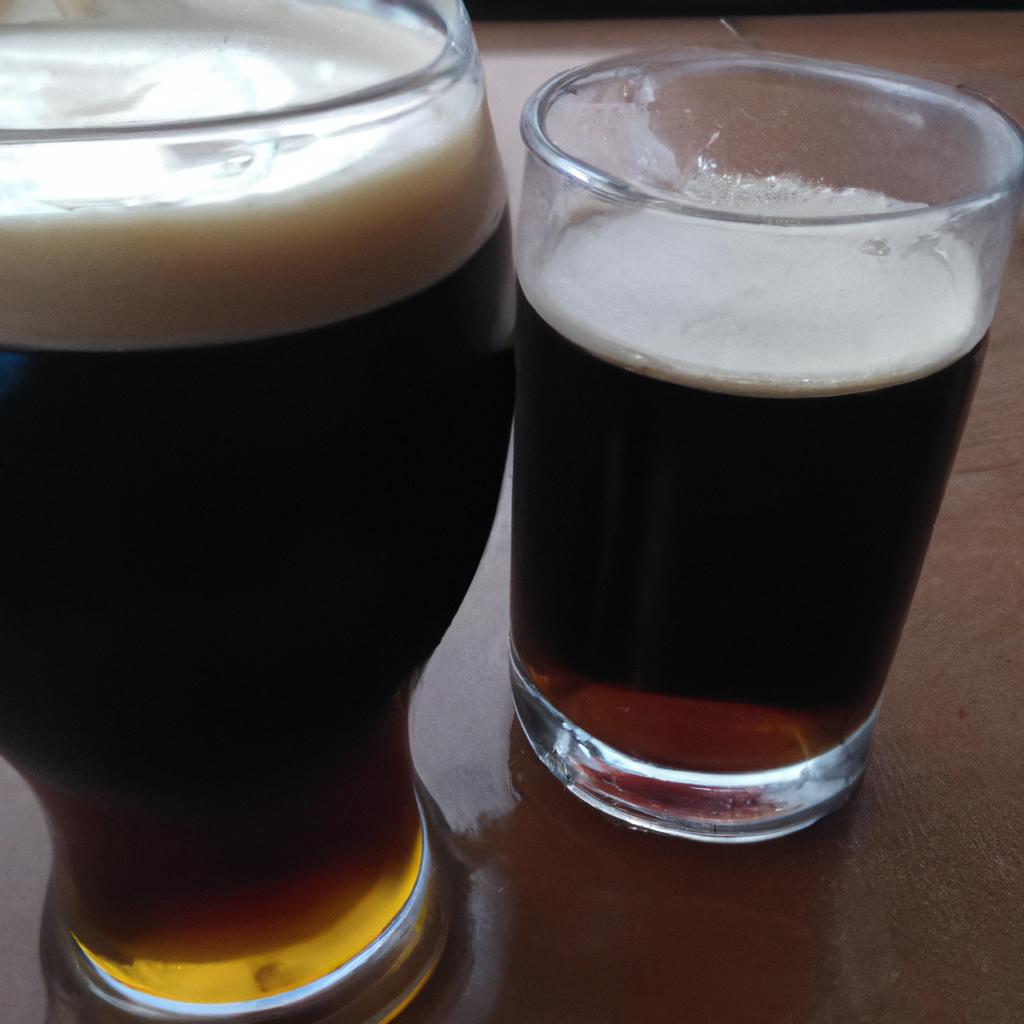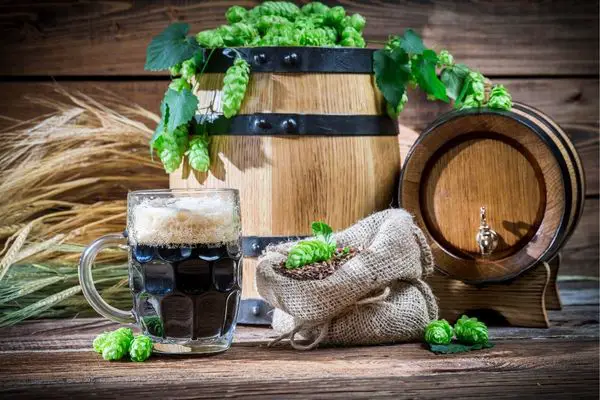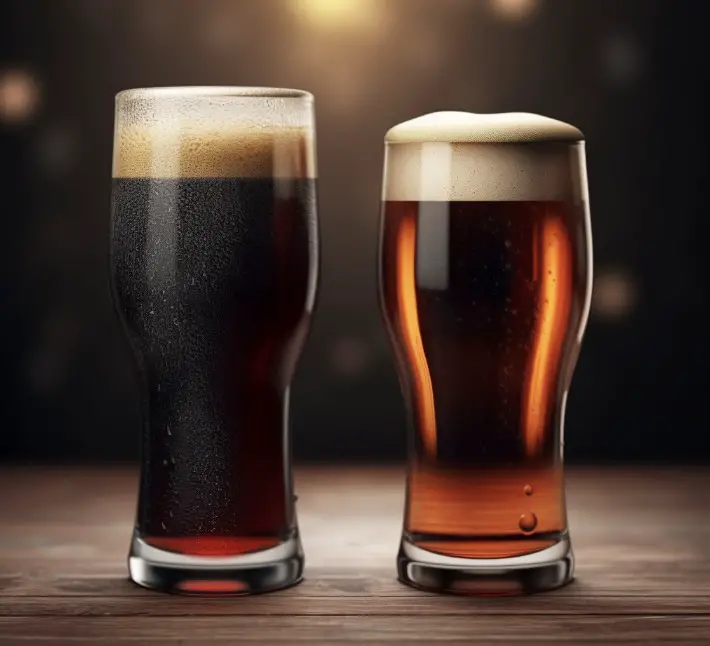As a seasoned homebrewer and beer enthusiast, I often find myself explaining the differences between various beer styles to friends, family, and curious onlookers at tastings.
One of the most common questions I get is, “What’s the difference between a dark lager and a stout?”
While both of these styles are characterized by their dark color and rich, roasty flavors, there are some key differences that set them apart.
In this blog post, I’ll take you through the history of each style, the brewing process, and the flavor profiles of dark lagers and stouts, as well as my personal experiences brewing and tasting these delicious brews.
1. A Brief History of Dark Lagers
Dark lagers have a long and storied history dating back to the early days of brewing in Central Europe.

The first dark lagers were likely brewed in Germany and the Czech Republic, where the cool climate and abundance of lager yeast strains lent themselves to the production of these crisp, clean-tasting beers.
Over time, dark lagers have evolved into a diverse category of beers that includes everything from the light-bodied, toasty Munich Dunkel to the rich, chocolatey Baltic Porter.
My First Encounter with a Dark Lager
I’ll never forget the first time I tried a dark lager. I was on a trip to Germany and had the opportunity to visit a small, family-owned brewery in Bavaria.
The brewmaster proudly presented me with a glass of his Munich Dunkel, which had an inviting reddish-brown hue and a delicate aroma of toasted bread and caramel.
As I took my first sip, I was struck by the beer’s smooth, malty sweetness and subtle hop bitterness. It was love at first sip, and I knew I had to try my hand at brewing a dark lager when I returned home.
2. A Brief History of Stouts
Stouts, on the other hand, have their roots in the British Isles. The style originated as a stronger, more robust version of the popular porter style, which was first brewed in London in the early 18th century.

The term “stout” originally referred to any strong beer, but over time it became associated specifically with dark, roasty beers made with a high percentage of roasted barley.
Today, the stout category encompasses a wide range of sub-styles, from the dry, coffee-like Irish Stout to the velvety, chocolatey Russian Imperial Stout.
My Introduction to the World of Stouts

My first foray into the world of stouts was a bit of a trial by fire. I was visiting a local craft brewery with some friends when the bartender suggested we try their newly-released Russian Imperial Stout.
With its jet-black color and thick, creamy head, this beer was certainly an imposing sight. As I raised the glass to my nose, I was greeted by an intense aroma of dark chocolate, espresso, and burnt sugar.
The flavor was equally complex and intense, with notes of molasses, dark fruit, and a warming alcohol finish. While it was certainly a far cry from the crisp, refreshing dark lager I had fallen in love with, I was captivated by the depth and richness of this bold stout.
3. The Brewing Process: Dark Lagers
The brewing process for dark lagers is similar to that of other lager styles, but with some key differences in the malt bill and fermentation temperatures.
Dark lagers typically use a base of Munich or Vienna malt, which contributes a rich, bready sweetness to the beer. Specialty malts like chocolate malt, Carafa, or roasted barley are added in small amounts to create the characteristic dark color and roasty flavors.
My Experience Brewing Dark Lagers
As a homebrewer, I’ve found that the key to brewing a great dark lager lies in striking the right balance between malt sweetness and roastiness.
It can be tempting to go heavy on the dark malts to achieve a deep, dark color, but doing so can result in a beer that tastes more like a stout than a lager. Instead, I prefer to use a light hand with the specialty malts, focusing instead on building a solid base of Munich or Vienna malt.
Fermentation for dark lagers requires a bit of patience, as lager yeast strains are typically slower to work their magic than their ale counterparts.
I like to ferment my dark lagers at a cool 50°F (10°C) for about two weeks, followed by an extended period of cold conditioning (also known as “lagering”) at near-freezing temperatures.
Not unlike the cold crashing used for cider or mead, this helps to create the clean, crisp flavors and smooth mouthfeel that are the hallmark of a great dark lager.
4. The Brewing Process: Stouts
Brewing a stout is a bit of a different beast than brewing a dark lager, thanks in large part to the use of a much higher percentage of dark, roasted malts. The base malt for most stouts is pale malt, which provides a relatively neutral canvas for the dark malts to shine. Roasted barley is the star of the show in most stouts, contributing the intense coffee and chocolate flavors that define the style.
My Adventures in Stout Brewing
My first attempt at brewing a stout was a bit of an adventure in trial and error. I started with a basic recipe for an Irish Stout, using a simple malt bill of pale malt, flaked barley, and roasted barley.
I quickly learned that the high percentage of roasted barley can make for a challenging brew day, as the dark, sticky grains have a tendency to clump together and create a slow, frustrating sparge. Despite the challenges, the end result was a delicious, roasty stout that I was proud to share with friends and family.
One of the things I enjoy most about brewing stouts is the opportunity to experiment with different combinations of dark malts and adjuncts.
Over the years, I’ve brewed stouts with additions like chocolate, coffee, vanilla, and even chili peppers, with varying degrees of success. While not every experiment has been a home run, it’s been a fun and educational journey exploring the wide world of stout brewing.
5. Flavor Profiles: Dark Lagers
When it comes to flavor, dark lagers are all about balance. These beers typically have a moderate-to-full body, with a smooth, malty sweetness that is balanced by a gentle roastiness and just enough hop bitterness to keep things from becoming cloying.
Common flavor descriptors for dark lagers include toasted bread, caramel, toffee, chocolate, and subtle coffee notes.
My Favorite Dark Lager Flavors
For me, the beauty of a well-crafted dark lager lies in its simplicity. While it’s always fun to experiment with bold flavors and exotic ingredients, there’s something to be said for a beer that showcases the pure, clean flavors of malt and hops.
One of my favorite dark lager experiences was a Czech-style Tmavé I brewed a few years ago. This beer had a beautiful ruby-brown color and a rich, toasty malt character that was perfectly balanced by a spicy, floral hop presence. It was the kind of beer that’s easy to enjoy by the pint, with a depth of flavor that keeps you coming back for more.
6. Flavor Profiles: Stouts
If dark lagers are all about balance, stouts are all about boldness. These beers are typically full-bodied and rich, with intense flavors of coffee, chocolate, and roasted malt. The bitterness in stouts comes from both the hops and the roasted grains, which can create a complex interplay of bitter, sweet, and roasty flavors.
My Favorite Stout Flavors
As a self-professed lover of strong flavors, I’m always drawn to the bold, roasty character of a well-made stout. My favorite stout experience was a barrel-aged Russian Imperial Stout I had the pleasure of trying at a beer festival a few years back.
This beer had been aged in bourbon barrels for over a year, and the result was a symphony of flavors that included dark chocolate, espresso, vanilla, oak, and a hint of bourbon warmth. It was a beer to be sipped and savored, and it served as a powerful reminder of the depth and complexity that can be achieved in the stout style.
7. Food Pairings: Dark Lagers
Dark lagers are incredibly versatile when it comes to food pairings, thanks to their balanced flavor profile and smooth, clean finish.
They’re a natural match for traditional German fare like sausages, pretzels, and schnitzel, but they also pair well with a wide variety of other cuisines. Some of my favorite dark lager pairings include barbecue, grilled vegetables, and even dark chocolate desserts.
8. Food Pairings: Stouts
Stouts, with their bold, roasty flavors, can be a bit more challenging to pair with food, but when done right the results can be spectacular. Rich, hearty dishes like beef stew, chili, or shepherd’s pie are natural matches for the robust flavors of a stout.
On the dessert side, the intense chocolate and coffee notes in stouts make them a perfect match for sweets like chocolate cake, tiramisu, or a scoop of vanilla ice cream.
9. Aging Potential: Dark Lagers vs Stouts
While both dark lagers and stouts can be enjoyed fresh, they each have different aging potentials. Dark lagers, with their clean, crisp flavors, are best enjoyed fresh and are not typically suited for long-term aging.

Stouts, on the other hand, can often benefit from some time in the cellar, particularly higher ABV examples like Russian Imperial Stouts or barrel-aged stouts. Over time, the flavors in these beers can meld and mellow, creating a smoother, more complex drinking experience.
10. The Verdict: Dark Lager vs Stout
So, which is better: dark lager or stout? The answer, of course, is a matter of personal taste. As a lover of both styles, I find it impossible to choose a favorite.

Dark lagers offer a clean, refreshing take on dark beer, with a balanced flavor profile that makes them easy to enjoy in any season.
Stouts, with their bold, roasty flavors, are the perfect choice for those who crave intensity and complexity in their beer.
In conclusion, both dark lagers and stouts have their own unique characteristics and appeal to different tastes. Here are 10 facts about these two beer styles:
1. Dark lagers have their origins in Central Europe, while stouts originate from the British Isles.
2. Dark lagers use a base of Munich or Vienna malt, while stouts use pale malt as their base.
3. Dark lagers are fermented with lager yeast strains, while stouts are fermented with ale yeast strains.
4. Dark lagers are known for their smooth, malty sweetness and subtle roastiness.
5. Stouts are characterized by their bold, roasty flavors and intense coffee and chocolate notes.
6. Dark lagers are typically lighter-bodied and more refreshing than stouts.
7. Stouts can range from dry and coffee-like to rich and velvety, depending on the sub-style.
8. Dark lagers are versatile food-pairing beers, while stouts can be more challenging (but rewarding) to pair with food.
9. Dark lagers are best enjoyed fresh, while stouts can often benefit from some aging.
10. Ultimately, the choice between dark lager and stout comes down to personal taste and preference.
So go ahead, grab a pint (or two) of your favorite dark beer, and raise a toast to the rich and diverse world of dark lagers and stouts. Cheers!
FAQs
What is the difference between porter lager and stout?
Porter is a dark beer that originated in London, England, and is characterized by its roasted malt flavor and notes of chocolate and coffee. Lager, on the other hand, is a lighter beer that is brewed using a different yeast strain and fermentation process. Stout is a type of ale that is typically darker and richer than porter, with a creamy and smooth texture and flavors of coffee, chocolate, and roasted malt.
Is Guinness a dark lager?
No, Guinness is not a dark lager. It is a stout.
Is Guinness better for you than lager?
No, Guinness is not necessarily better for you than lager. While Guinness has a lower alcohol content and fewer calories than some lagers, it still contains alcohol and should be consumed in moderation. Additionally, the nutritional value of both drinks is minimal, with little to no vitamins or minerals.
Is stout better than lager?
Both stout and lager are different types of beer with distinct characteristics and taste profiles, and the preference for one over the other is subjective and depends on individual taste.
Which is healthier lager or stout?
Both lager and stout can be part of a healthy diet in moderation. However, stout tends to have a higher calorie and alcohol content than lager, so if you’re watching your calorie intake or alcohol consumption, lager may be a better choice.



